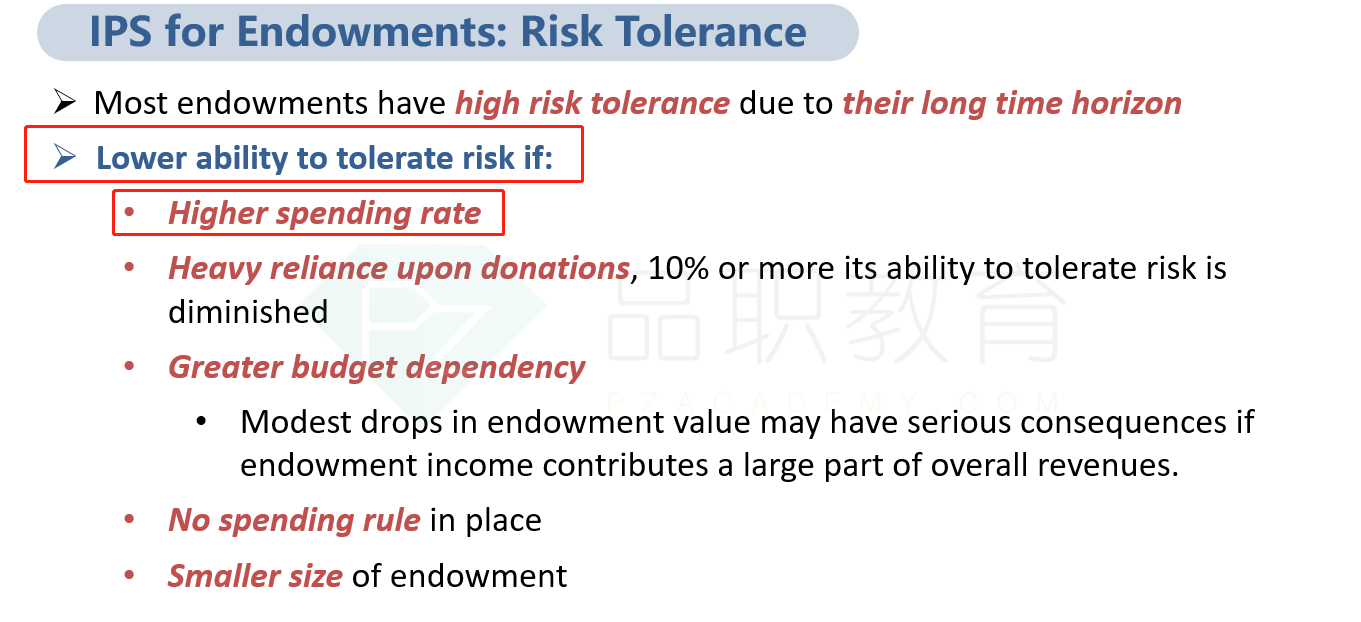
老师好,这道题的答案圈红的部分,不太理解为什么return requirement低,就能说明ability to take risk高。我的理解是return requirement高的话,不是应该投的更激进吗?
发亮_品职助教 · 2019年05月22日
“我的理解是Return requirement高的话,不是应该投的更激进吗?”
对的。因为想要获得更高的Expected return,就需要承担对应的风险,想要获得的Expected return,对应的是willingness to take risk。
但Endowment/Foundation的Abillity to take risk是受到:Time horizon、Spending requirements、是否有持续的Donation进来、Endowment/Foudation现金流对项目支持的重要性、Asset base的大小等这些硬指标来决定的,这决定了能承担风险的上限。否则就可能无法实现Foundation的目标。
想要获得的Expected return,对应的willingness to take risk,只能在上面说的这个“上限”以内。否则就是不切实际的Expected return,会损害到Foundation的目标。
而我们说的Return requirement其实就是:要实现Foundation目标的最低Expected return。就是Spending rate + inflation + management fee。这个Required return所对应的风险,一定在Risk tolerance以内,否则连这个风险都不能承受,说明Foundation的目标定的不合适。
下来就是Return requirement影响Ability to take risk,Return requirement它实际就是Spending requirements。
因为4.3%+2.0%是每年项目支持的名义支出,0.2%是管理费用支出,整体之和就是每年的Spending。
Spending requirements的大小会影响到Ability to take risk,因为如果Spending requirements很小的话,对Foundation的要求比较低,即使实际获得的投资收益比预期低很多,这个Foundation的目标也很容易满足,所以允许了投资收益能有较大的波动率, 也就是有能力承担收益较大的不确定性,即Ability to take Risk较高,这提高了Foundation承担风险的上限。
当然因为Required return降低了,于是Expected return就降低了,可以选择非常保守的投资,即:降低wiliingness to take risk。但Ability to take Risk的硬指标上限是提高的。
讲义这里有结论:
